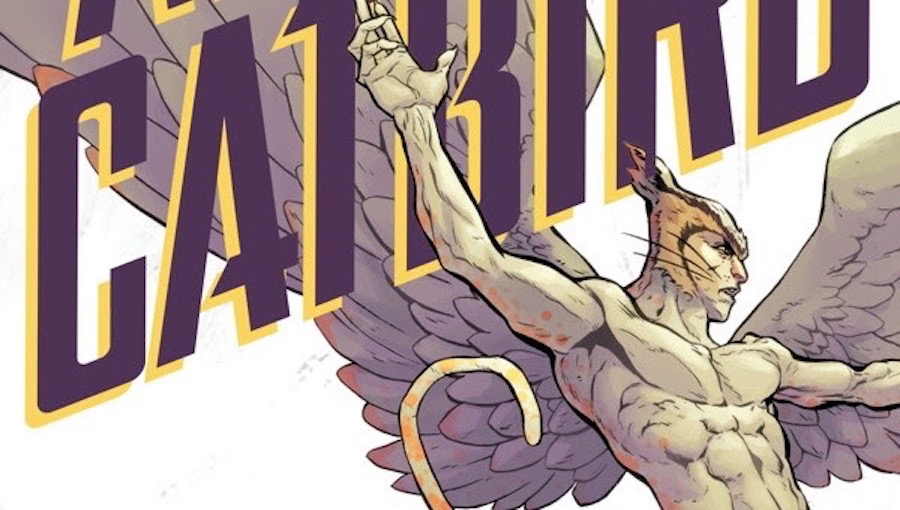Margaret Atwood takes to comics, and, while at times charming, her Angel Catbird graphic novel lacks commitment to the absurdity of her idea and the logic within the story.
Strig Feleedus, a scientist newly hired, is working on a genetic super splicer serum. Yes, all thought of reality stops there. His boss is a grotesque-looking, rat-like goon. Within a couple of pages, we’re allowed to see into the boss’ thoughts that he wants to create a race of rat warriors with the work Strig is trying to figure out. Strig meets Cate. Cate knew the previous scientist that was working on the project and warns Strig to be careful. Strig works endlessly, and finally figures out the formula. While on his way running it to his boss late one night, a car hits his cat and him, shattering the serum. The serum spills over Strig, his cat, and an owl that happens to randomly fly into the mix, and he becomes Angel Catbird. It turns out that there are other half-human, half-creatures in this world, and as Strig transforms, he begins to take on attributes of both a cat and a bird, creating some inner turmoil. Will Strig, with his new-found friends, be able to stop his mad scientist boss who is actually half-human, half-rat?
The book has the charm of Golden Age-era comic, and from Atwood’s introduction, you can see that it is what inspired her work here. The ironic thing is that her introduction is more genuine and interesting to read than the comic itself. In her intro, you get a sense of character and charisma. You hear her voice. The comic itself is wooden and on the nose.
I talked earlier about a sense of logic. For instance, a character steals the secret plans from the bad guy, and then upon returning to the leader of the group must go to sleep. A catastrophe occurs, and they look at the plans and realize the first item was the catastrophe, which could have been avoided if the character had handed over the plans. Due to this, one character dies. This action gets one of the characters killed, yet no one seems to bat an eye. The storyteller needed this to happen, but in the end didn’t justify any of the characters’ actions and made their responses disingenuous toward the situation. Another instance is when Stig and Cate realize their boss is trying to kill them, and they go back to work anyway.
I would love to see this story retold with the charm, humor, and voice with which the introduction is written. I think Atwood would have a real winner on her hands. As it stands, it’s a nice idea with everyone’s heart in the right places, but not much more.

